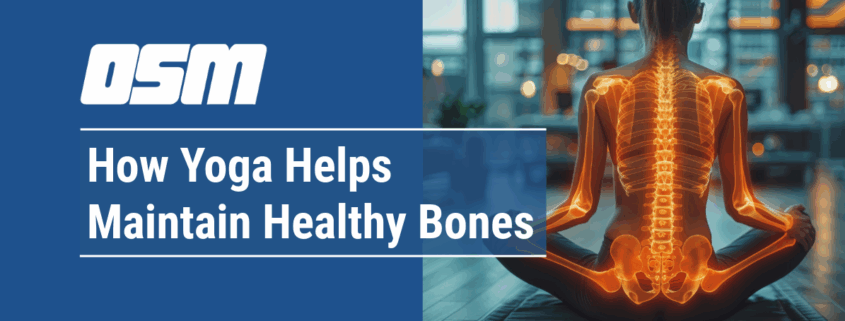How Yoga Helps Maintain Healthy Bones
Article featured on UBMD Orthopaedics & Sports Medicine
Bone loss is serious business. Both men and women reach maximum bone mass around the age of 30 — and after that, it’s a matter of maintaining what you’ve got.
The National Institutes of Health estimate that 10 million Americans have osteoporosis and another 34 million suffer from its precursor, osteopenia. While it’s almost impossible to reverse these conditions, it’s possible to slow their effects — and yoga may be one of your strongest allies. Best of all, yoga can be done by anyone regardless of age or mobility level.
Yoga is a Weight-Bearing Exercise
Yoga is a weight-bearing exercise, which is one of the best ways to enhance bone health. Weight-bearing exercises work by holding your body’s weight against gravity, putting a mild stress on your bones and forcing them to lay down new growth. In this way, yoga isn’t much different from other weight-bearing exercises, like walking or running.
Yoga differs in one big way from these “impact” exercises — it won’t damage cartilage or stress your joints. Instead, it helps lengthen the body’s muscles and holds them in place, using that tension to stress the bone and promote growth.
Yoga Promotes a Plant-Based Diet
Earlier this month, we talked about how fruits and vegetables promote bone health. There’s a strong correlation between a plant-based diet and bone density. Many Americans eat more protein than they need. But because protein makes the body create acid, eating too much can increase the amount of acid in your bloodstream. To neutralize it and rebalance your blood’s pH levels, your body pulls calcium from your bones. Eating a plant-based diet can avoid this imbalance — because fruits and vegetables naturally neutralize the acid caused by eating protein, your body won’t need to pull calcium from your bones.
Practice Safely
While yoga can be beneficial for bone health, it can also be detrimental if it’s not practiced correctly. For example, in someone suffering from osteoporosis, a forward bend can increase the likelihood of a spinal fracture by excessively stressing the front of your vertebrae. As with any exercise regimen, talk to your doctor before you begin.
The Orthopedic & Sports Medicine Center of Oregon is an award-winning, board-certified orthopedic group located in downtown Portland Oregon. We utilize both surgical and nonsurgical means to treat musculoskeletal trauma, spine diseases, foot and ankle conditions, sports injuries, degenerative diseases, infections, tumors and congenital disorders.
Our mission is to return our patients back to pain-free mobility and full strength as quickly and painlessly as possible using both surgical and non-surgical orthopedic procedures.
Our expert physicians provide leading-edge, comprehensive care in the diagnosis and treatment of orthopedic conditions, including total joint replacement and sports medicine. We apply the latest state-of-the-art techniques in order to return our patients to their active lifestyle.
If you’re looking for compassionate, expert orthopedic and podiatric surgeons in Portland Oregon, contact OSM today.
Phone:
503-224-8399
Address
17355 Lower Boones Ferry Rd Suite 100A
Lake Oswego, OR 97035
Hours
Monday–Friday
8:00am – 4:30pm



